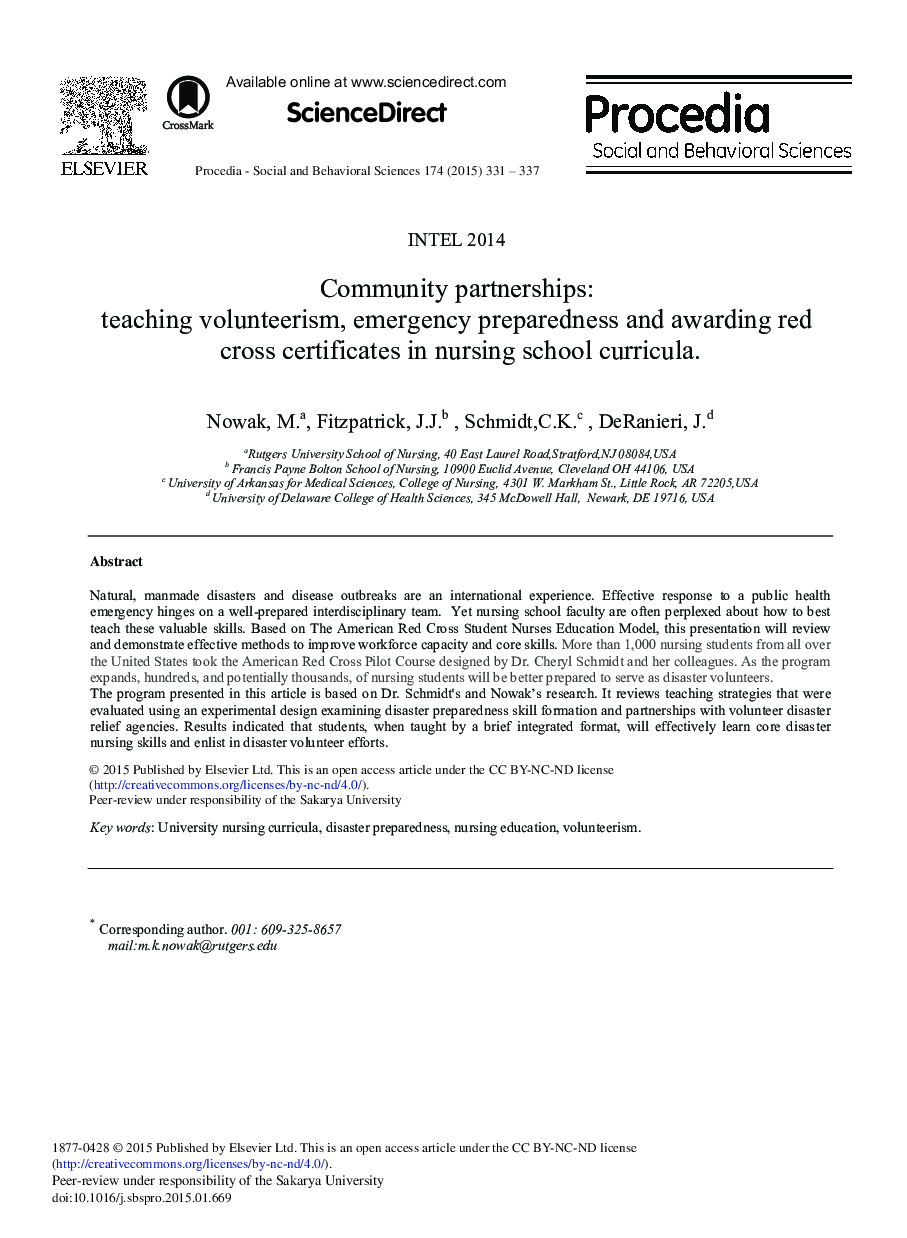| Article ID | Journal | Published Year | Pages | File Type |
|---|---|---|---|---|
| 1111241 | Procedia - Social and Behavioral Sciences | 2015 | 7 Pages |
Natural, manmade disasters and disease outbreaks are an international experience. Effective response to a public health emergency hinges on a well-prepared interdisciplinary team. Yet nursing school faculty are often perplexed about how to best teach these valuable skills. Based on The American Red Cross Student Nurses Education Model, this presentation will review and demonstrate effective methods to improve workforce capacity and core skills. More than 1,000 nursing students from all over the United States took the American Red Cross Pilot Course designed by Dr. Cheryl Schmidt and her colleagues. As the program expands, hundreds, and potentially thousands, of nursing students will be better prepared to serve as disaster volunteers.The program presented in this article is based on Dr. Schmidt's and Nowak's research. It reviews teaching strategies that were evaluated using an experimental design examining disaster preparedness skill formation and partnerships with volunteer disaster relief agencies. Results indicated that students, when taught by a brief integrated format, will effectively learn core disaster nursing skills and enlist in disaster volunteer efforts.
